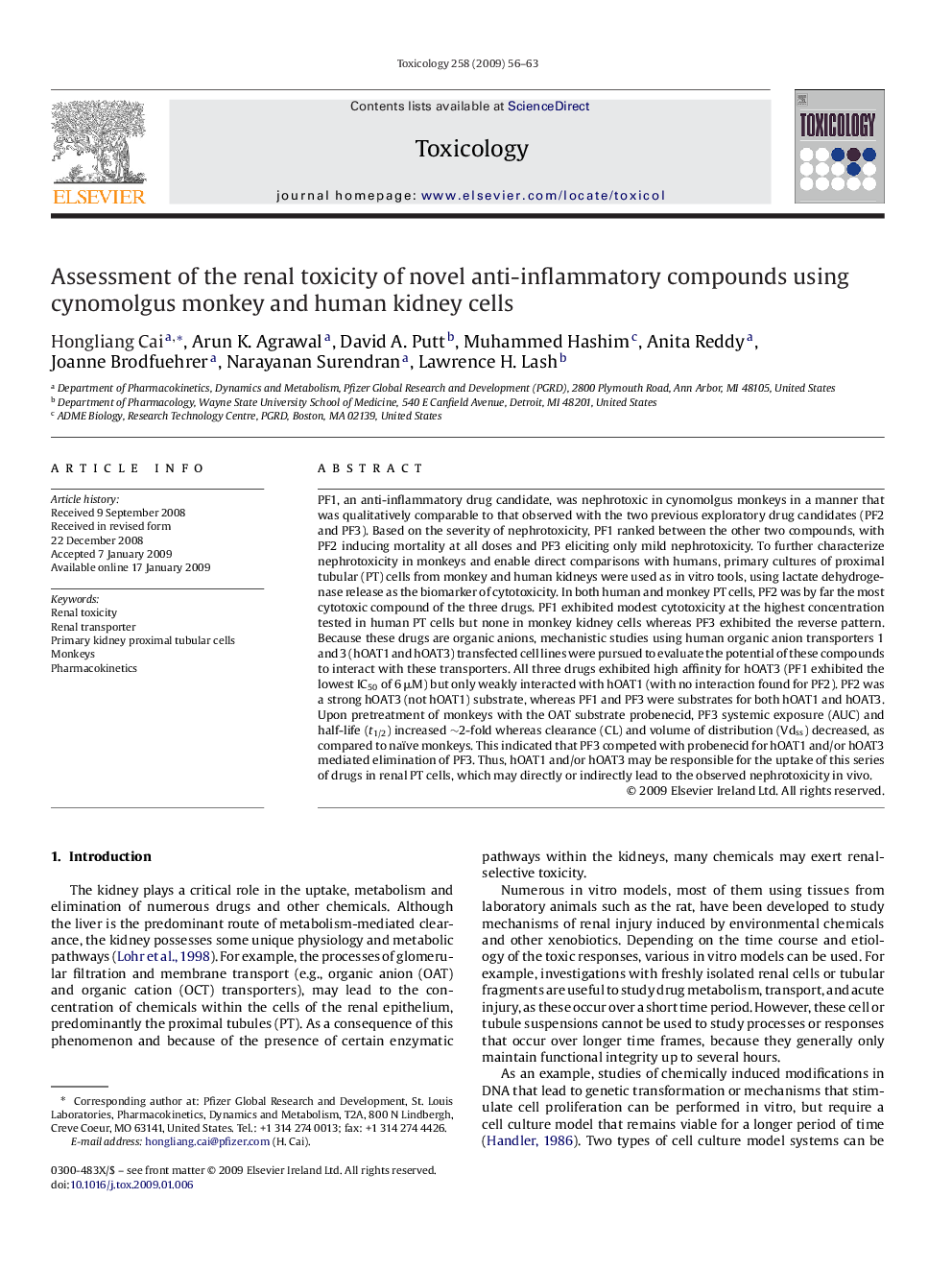| کد مقاله | کد نشریه | سال انتشار | مقاله انگلیسی | نسخه تمام متن |
|---|---|---|---|---|
| 2596870 | 1132554 | 2009 | 8 صفحه PDF | دانلود رایگان |
عنوان انگلیسی مقاله ISI
Assessment of the renal toxicity of novel anti-inflammatory compounds using cynomolgus monkey and human kidney cells
دانلود مقاله + سفارش ترجمه
دانلود مقاله ISI انگلیسی
رایگان برای ایرانیان
کلمات کلیدی
موضوعات مرتبط
علوم زیستی و بیوفناوری
علوم محیط زیست
بهداشت، سم شناسی و جهش زایی
پیش نمایش صفحه اول مقاله

چکیده انگلیسی
PF1, an anti-inflammatory drug candidate, was nephrotoxic in cynomolgus monkeys in a manner that was qualitatively comparable to that observed with the two previous exploratory drug candidates (PF2 and PF3). Based on the severity of nephrotoxicity, PF1 ranked between the other two compounds, with PF2 inducing mortality at all doses and PF3 eliciting only mild nephrotoxicity. To further characterize nephrotoxicity in monkeys and enable direct comparisons with humans, primary cultures of proximal tubular (PT) cells from monkey and human kidneys were used as in vitro tools, using lactate dehydrogenase release as the biomarker of cytotoxicity. In both human and monkey PT cells, PF2 was by far the most cytotoxic compound of the three drugs. PF1 exhibited modest cytotoxicity at the highest concentration tested in human PT cells but none in monkey kidney cells whereas PF3 exhibited the reverse pattern. Because these drugs are organic anions, mechanistic studies using human organic anion transporters 1 and 3 (hOAT1 and hOAT3) transfected cell lines were pursued to evaluate the potential of these compounds to interact with these transporters. All three drugs exhibited high affinity for hOAT3 (PF1 exhibited the lowest IC50 of 6 μM) but only weakly interacted with hOAT1 (with no interaction found for PF2). PF2 was a strong hOAT3 (not hOAT1) substrate, whereas PF1 and PF3 were substrates for both hOAT1 and hOAT3. Upon pretreatment of monkeys with the OAT substrate probenecid, PF3 systemic exposure (AUC) and half-life (t1/2) increased â¼2-fold whereas clearance (CL) and volume of distribution (Vdss) decreased, as compared to naïve monkeys. This indicated that PF3 competed with probenecid for hOAT1 and/or hOAT3 mediated elimination of PF3. Thus, hOAT1 and/or hOAT3 may be responsible for the uptake of this series of drugs in renal PT cells, which may directly or indirectly lead to the observed nephrotoxicity in vivo.
ناشر
Database: Elsevier - ScienceDirect (ساینس دایرکت)
Journal: Toxicology - Volume 258, Issue 1, 5 April 2009, Pages 56-63
Journal: Toxicology - Volume 258, Issue 1, 5 April 2009, Pages 56-63
نویسندگان
Hongliang Cai, Arun K. Agrawal, David A. Putt, Muhammed Hashim, Anita Reddy, Joanne Brodfuehrer, Narayanan Surendran, Lawrence H. Lash,